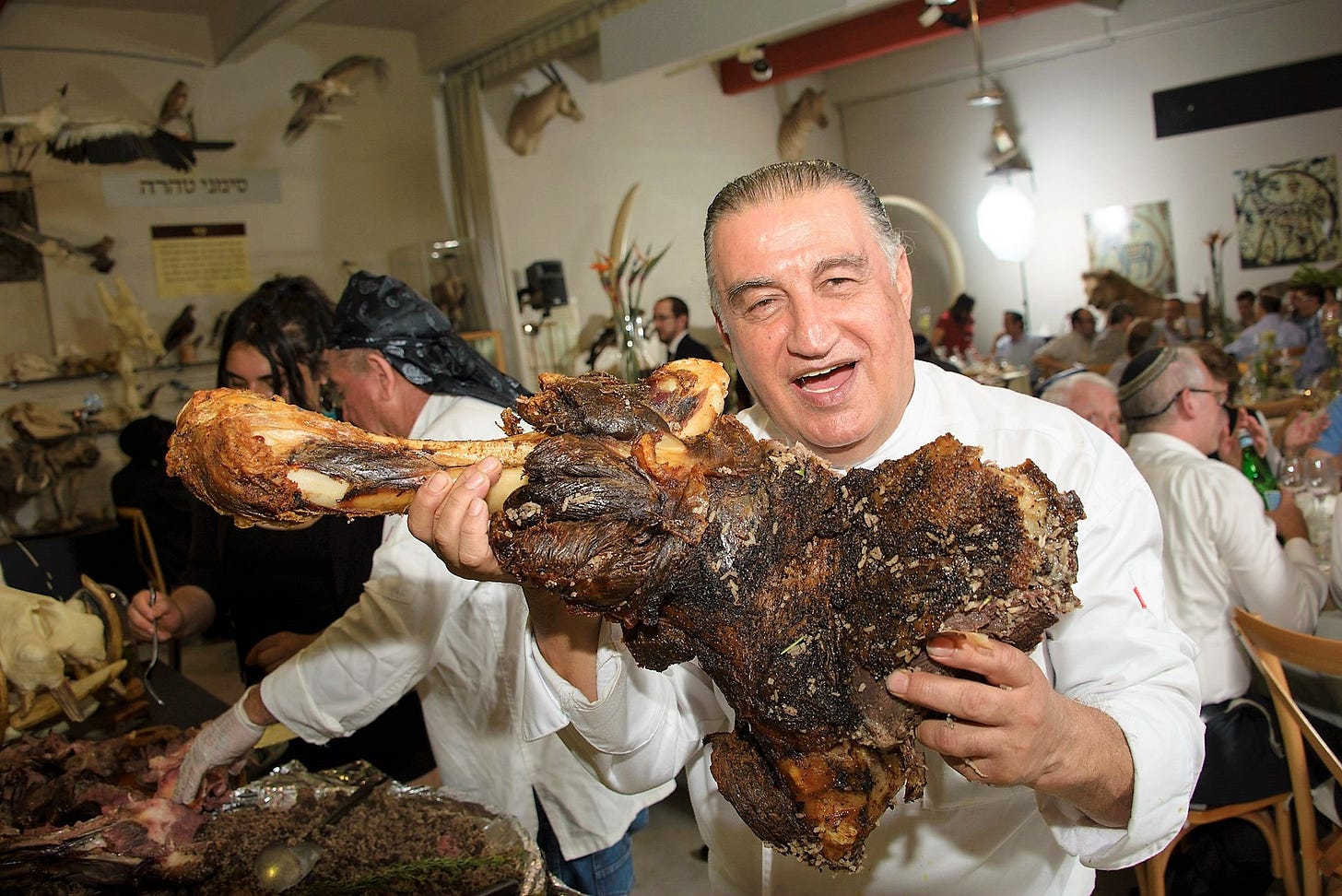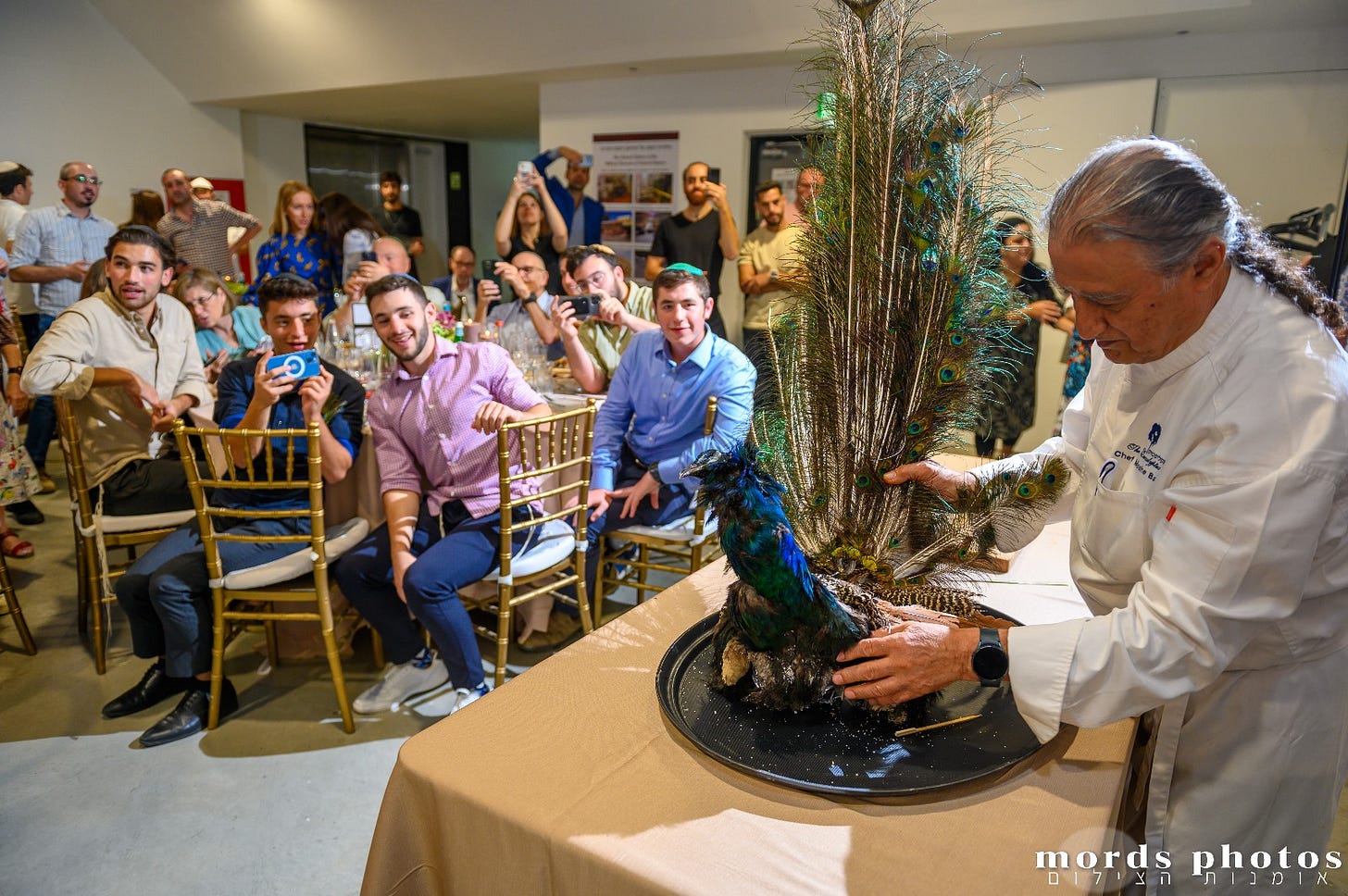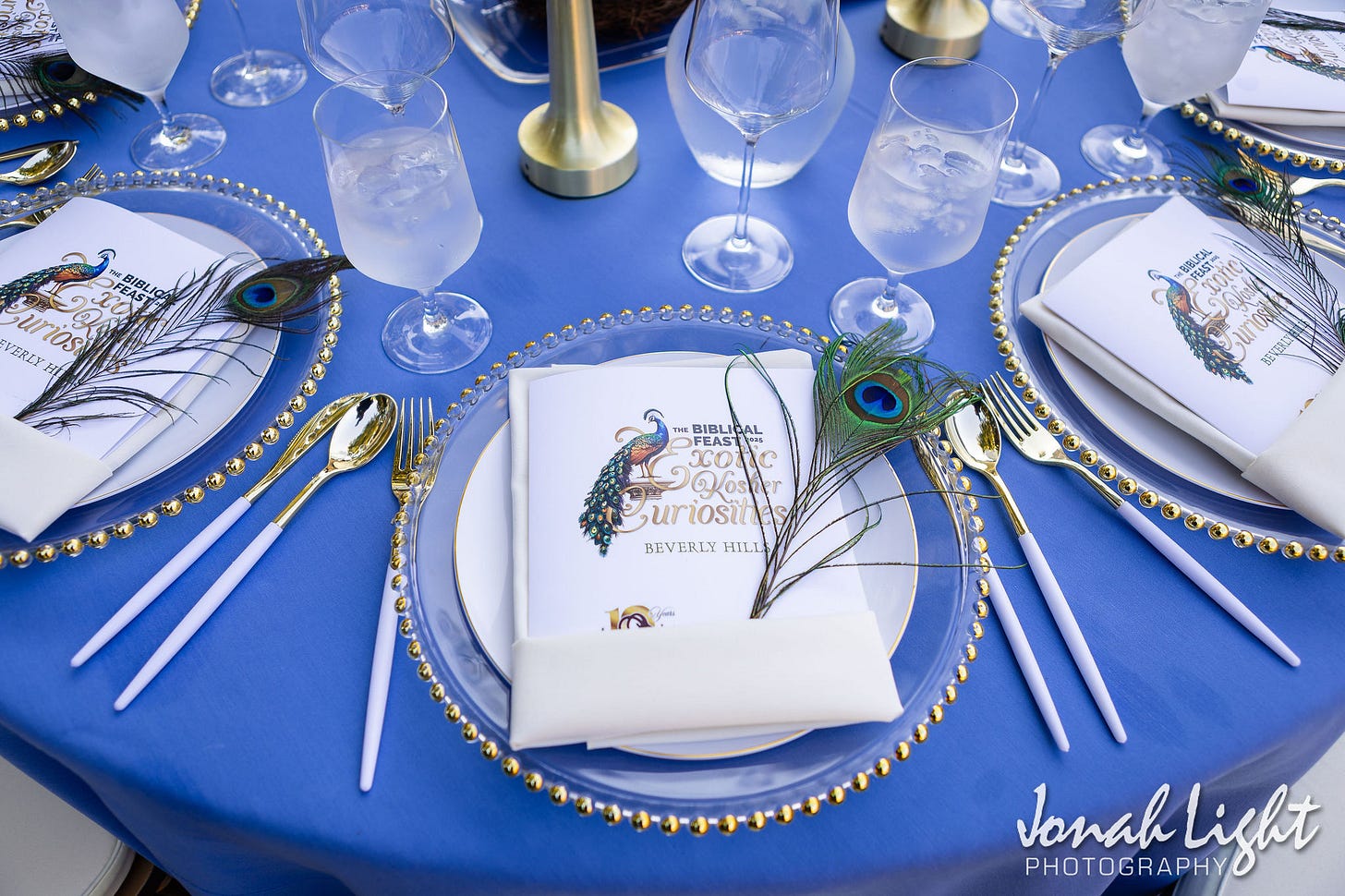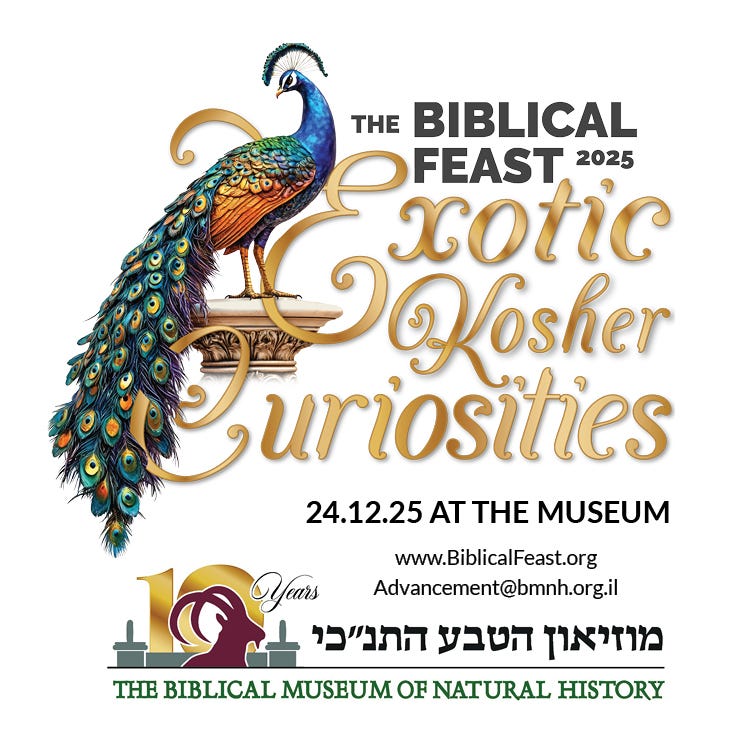This Is Not Treife!
Even if it's a Christmas dinner with birds that have no living tradition
This year’s theme at The Biblical Museum of Natural History’s signature dinner is “A Feast of Exotic Kosher Curiosities.” It just so happened that when we decided upon a date that worked from both a tourism and logistical perspective, it ended up being December 24th, Christmas Eve. Accordingly, I wanted to put reindeer on the menu (similar to how the korban Pesach was a lamb), but alas this proved impossible.
These events always have their unique challenges. In the past I’ve written about some of the hair-raising escapades involved; indeed, one of the precious birds that we acquired for this year’s event, of a species that flies with difficulty and is generally reluctant to do so, suddenly decided to seize an opportunity to slip past our staff and fly away.
Another type of challenge relates to PR. Do we publicly announce which species are on the menu? We generally do not, because it involves two challenges. One is that we are often not sure until the last minute what will actually be on the menu, since sourcing some of the species can be so challenging. But the other, which I would like to discuss in more detail, has to do with risking people thinking that we serve treife.
Kashrut is a topic about which there are many misconceptions, such as that we don’t know how to shecht a giraffe and you can’t eat a grasshopper if you’re not Yemenite. Some of these are extremely entrenched. For example, many people are absolutely certain that swordfish is not kosher. Yet the truth is that while there are some legitimate questions involved, it is beyond dispute that Jewish communities unhesitatingly ate swordfish under rabbinic authority for thousands of years. I have two scales in my office that I personally removed from a swordfish, and you can see the article on the museum’s Knowledge Base at https://www.biblicalnaturalhistory.org/swordfish.
Thankfully, many people have recently become aware that swordfish can actually legitimately be eaten, thanks to the research of several people along with various rabbis who have personally examined swordfish. But it’s more challenging with certain birds.
After many years of very careful study, it’s clear to me beyond any doubt that peacock, along with certain other birds that no kashrut agency will approve, are absolutely, positively 100% kosher for practical consumption beyond any doubt whatsoever. I even have multiple layers of reasoning and evidence for this, and I have discussed it with colleagues in the field who agree fully. Indeed, there are more reasons to permit peacock and certain other birds that we plan to serve than there are to permit turkey! (Not that I think that there is the slightest genuine reason to be concerned that turkey is not kosher.)
At the same time, there are also people with great knowledge in this field who insist that these birds cannot be eaten. From my perspective, this is for two reasons. One is that if you’ve spent decades trying to figure out living traditions for specific types of birds, it’s hard to accept that this effort has been entirely unnecessary (either because no living tradition is needed, or because the halachic definition of a “type” is much broader than people realize, or for other reasons).
The other reason is that we live at a time where society has become very, very halachically over-cautious - at least, regarding certain areas of halacha. Now, of course there is indeed a place in Orthodoxy for the principles of stringency and of not overturning common practice. Still, this is something which relates to sociology and about which there can legitimately be different approaches. And very often it’s simply a matter of gradually getting some more people on board.
A great example of this is with kezayit. Fifteen years ago, when I first researched the topic and realized that a kezayit is actually the size of an olive (gasp!), many people were deeply uncomfortable with the idea of relying on that halachically, no matter what the arguments. It just wasn’t done. Everyone said that you have to follow standard practice, which is to rely on the standard poskim, who in turn relied on the Ashkenaz rishonim.
Then five years later Rabbi Hadar Margolin published a Hebrew sefer saying the exact same things as me. And this year, Rabbi Aharon Notis, a rosh kollel in Lakewood, published an English work, The Great Shiurim Debate, which also says the exact same things. I wouldn’t yet call it a mainstream view, but it’s getting there, because once you get over the shock and adjustment, the arguments are simply overwhelming. (I’m hopeful that a similar process could happen in the charedi world with army enlistment once a certain number of charedim start wearing army uniform in charedi cities.)
I believe that the same thing will happen in due course with peacocks and other birds. I already managed to publish an article about the kashrut of peacocks in Techumin, a prestigious Hebrew halacha journal, though unfortunately due to space limitations they cut it down considerably. One day I might even somehow miraculously find the time to finish the second volume of The Torah Encyclopedia of the Animal Kingdom, on birds; in the interim I plan to publish a work on exotic kosher cuisine.
All this is a roundabout way of explaining why in the forthcoming Feast of Kosher Curiosities we will be serving not only peacock, but also other birds that no kashrut authorities will approve (and that we have never served before), but with which I (and certain colleagues in the field, along with our mashgiach) are certain to be totally, utterly kosher for a multitude of reasons - and yet I am nervous to publicize their names (I mean the names of the birds, not just the people). So, if you trust me (and I will be giving a full explanation at the event), I hope that you will join us!
Last time we ran this event at the museum it sold out, so I urge you to book well in advance. You can see booking details at www.BiblicalFeast.org. (Yes, it’s crazy expensive, but it’s a very exclusive event and the costs of producing it are enormous!) If you know people who are traveling to Israel in December, please let them know about it.
On another note, I will be visiting NY and NJ in two weeks - I will be posting details of my schedule soon. I still have some openings in my schedule, so please be in touch if you’d like to schedule either a talk or a private meeting (for museum donors at patron levels). Also, if you have a large vehicle and can help with transporting and temporarily storing an unusual item the approximate size and shape of a half-grown camel, please let me know!








NOTE: For some reason, the link to the feast website does not work for people who received this post via email. It's http://www.biblicalfeast.org.
I did try the Peacock the last time you served it although I felt badly that such a beautiful bird had to be put down for it. They are almost too beautiful to eat…..